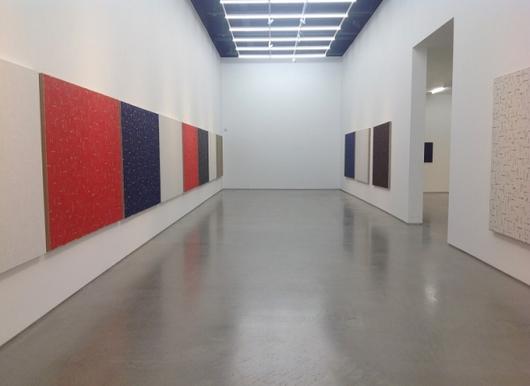 |
<이미지를 클릭하시면 크게 보실 수 있습니다> |
While respecting diverse aspects of individual origins, Choi incorporates certain clues to his interrogations of those origins into the present time. It is an attempt to redefine the fifty odd years of his own memories as one origin.
He tries to pave the way for a clear understanding of the diverse aspects of all the concerns. By making his work a natural space for the documentation of the most intimate and personal emotions, anxieties, and delights of everyday life, he reduces it into its fundamental elements, and presents it as Conditional Planes.
His process begets an anthropomorphous form–in this sense, it could be a genetic program that operates deep within our minds. When he encounters a certain subject and attempts to maximize its potential to that of a life form, he emphasizes its useful/positive functions and selectively uses all of the human senses.
Relying on reminiscences of his past, he composes his work with emotions that may instinctively convey the details of the medium–soft and tactile sensations, coldness, and the warmth of sunshine etc. - and with subtle colors that remind us of certain images.
He does not represent these matters in a specific form; however, his compositions are closely associated with omnipresent matters (e.g.air) and everyday life (e.g. cooking), and his emotions emerge as a response to them.
His(Dansaekhwa-Korean monochrome painter CHOI MYOUNG YOUNG, Dansaekhwa:abstract paintings of Korea Artist CHOI MYOUNG YOUNG,최명영 화백,최명영 작가,단색화 최명영,단색화:한국추상회화 화가 최명영,모노크롬회화 최명영,단색화가 최명영,韓国単色画家 崔明永,韓国の単色画家 チェイㆍミョンヨン)artworks take shape based on his understanding of the ways in which every-day things and their characteristics function.
△Kim Yongdae(김용대 전 대구미술관장)/Independent Curator, the former director of the Daegu Museum of Art
권동철 미술칼럼니스트
-Copyright ⓒ 이코노믹리뷰. 무단전재 및 재배포 금지-
이 기사의 카테고리는 언론사의 분류를 따릅니다.
기사가 속한 카테고리는 언론사가 분류합니다.
언론사는 한 기사를 두 개 이상의 카테고리로 분류할 수 있습니다.
언론사는 한 기사를 두 개 이상의 카테고리로 분류할 수 있습니다.


